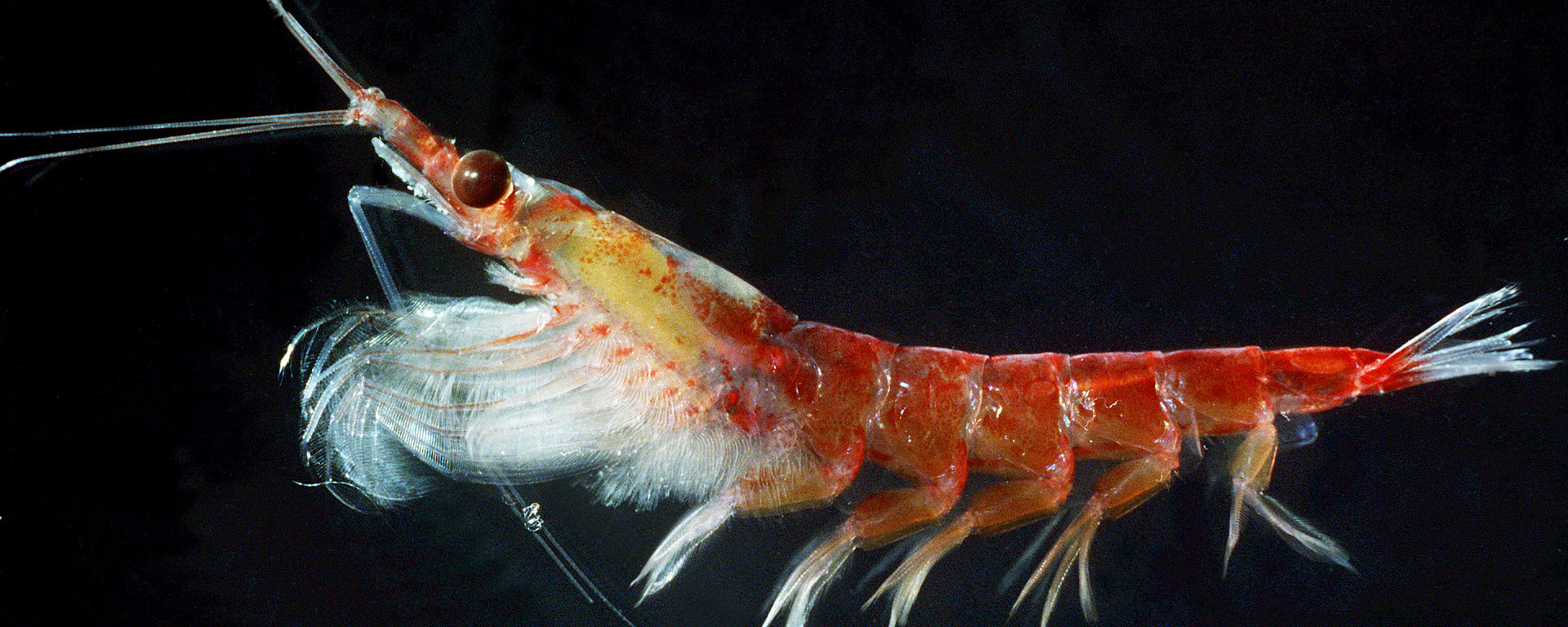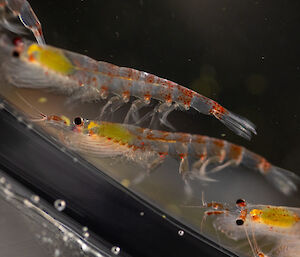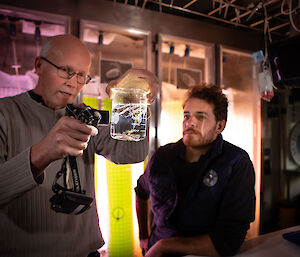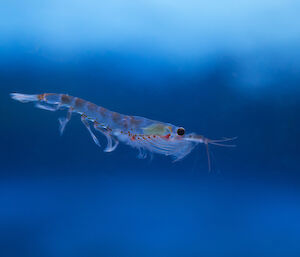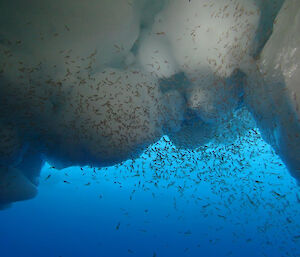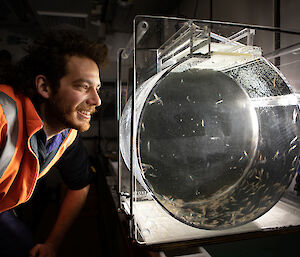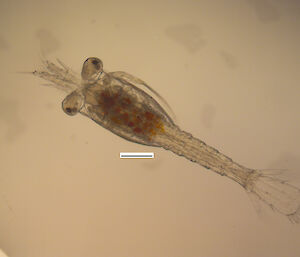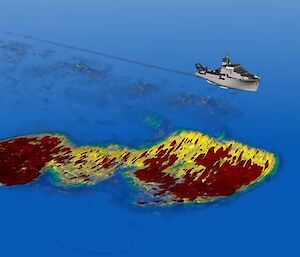Scientific name
Euphausia superba
Physical description
Krill look like smaller versions of familiar crustaceans such as prawns or lobsters.
Krill are mostly transparent, although their shells have a bright red tinge from small pigment spots. Their digestive system is usually visible and is often a vivid green from the microscopic plants they have eaten. They have large black eyes.
They range in size from small tropical species (of less than one centimetre in length), to 6 cm for the largest pelagic krill species in the Southern Ocean. There is one deep-sea benthic krill species that can reach 14 cm.
Adult Antarctic krill are approximately 6 cm in length and weigh over one gram.
Distribution and abundance
There are 5 species of krill found in Antarctic waters. The most dominant of these species is Antarctic krill, Euphausia superba.
Antarctic krill is one of the most abundant and successful animal species on the planet. They are frequently found in such abundance that they colour the sea a reddish-brown. They may be small individually, but there is an estimated 400 million tonnes of Antarctic krill in the Southern Ocean.
Antarctic krill aggregate in schools or swarms, where the density of the animal can be as high as 30,000 individuals per cubic metre. The swarms occur in larger groupings or patches. Scientists are still determining the social structure of the swarms. It seems that some krill swarms may be made up of entirely of juveniles, while other swarms may consist of all females or all males.
Growing and shrinking
Krill can change from adults into juveniles. It is estimated that Antarctic krill live for 5 to 10 years, but determining the age of the animals is quite a problem for scientists.
Crustaceans usually grow by moulting their hard shell (exoskeleton), expanding the new one and then growing into it. When the exoskeleton becomes tight again, the moulting and growing process starts again. In most crustaceans, the moulting tends to slow down as the animal grows older, and stops altogether in adulthood. This means that scientists can usually tell the age of an animal from its size. On average, the larger the creature the older it is.
Antarctic krill are an exception to this rule. Because they live in the cold, dark Southern Ocean, they must survive the winter months when food is scarce. They do this very successfully. Laboratory studies have shown that Antarctic krill can survive more than 200 days of starvation.
Krill retain the ability to moult for life. They use this ability to continue growing and reducing their body size to help them survive. ‘Downsizing’ enables Antarctic krill to use their own body proteins as a source of fuel. All species of krill seem to share this adaptation.
At the end of summer, adult krill begin to lose their sexual characteristics. After a series of moults they again resemble two-year-old juveniles, giving no indication that they were ever adults. In spring, adults once more begin to develop sexual characteristics and become mature before the spawning season.
Breeding
Antarctic krill are thought to lay a number of broods of eggs, with as many as 8,000 eggs per brood. The season may last as long as 5 months.
Diet and feeding
Krill usually feed on the surface of the water at night and sink deeper in the water column during the day. The primary food of krill is phytoplankton, which are microscopic ocean plants suspended in the upper water column where light is sufficient to allow for growth.
In winter, krill have to use other food sources such as algae growing on the underside of the pack ice, detritus on the sea-floor or the other animals in the water. Krill can survive for long periods (up to 200 days) without food. They shrink in length as they starve.
Most of the larger Antarctic animals (seals, whales, seabirds, fish and squid) depend on Antarctic krill, directly or indirectly.
Visit our interactive feature Krill Matters, to learn how and why scientists studied Antarctic krill during a voyage of discovery in 2021.

